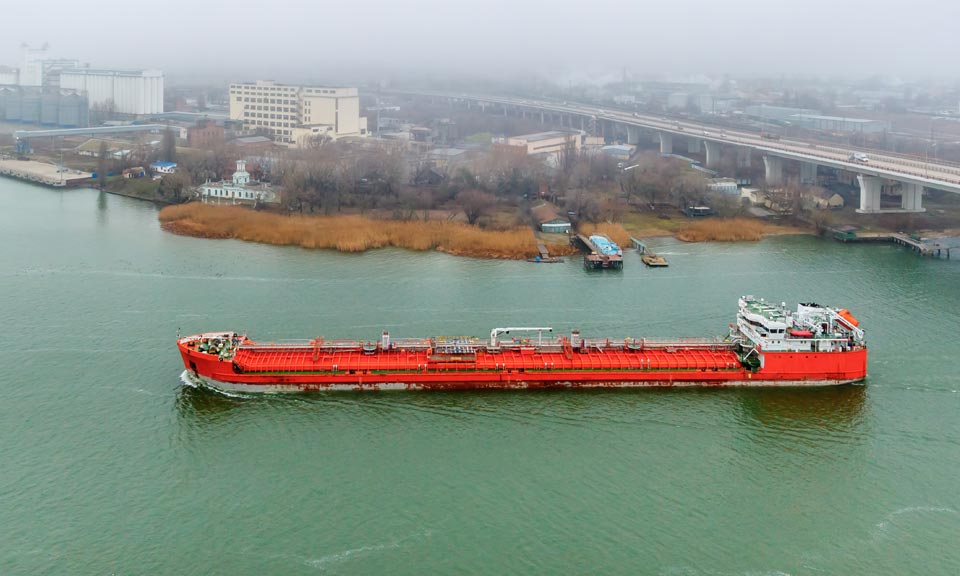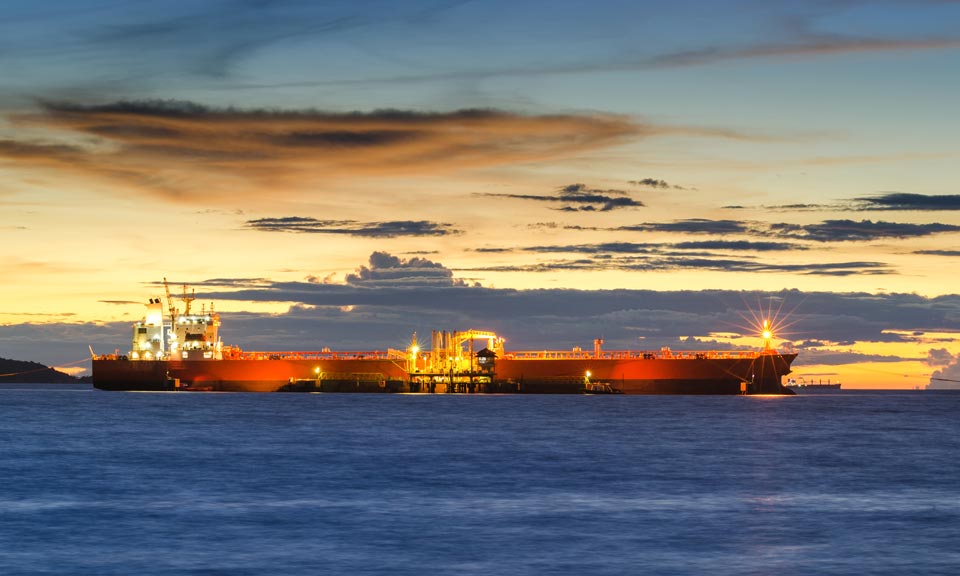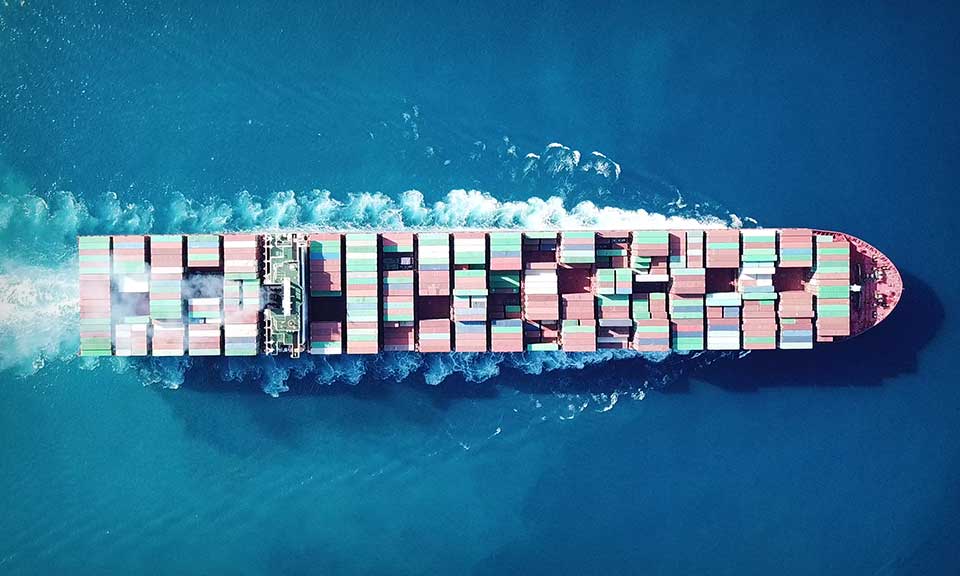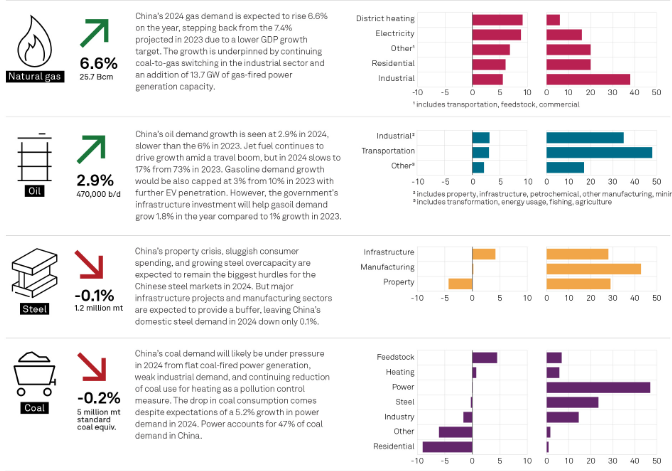INTERVIEW: Golden Ocean sees longer distances persisting for commodities on Russia fallout

Longer distances for coal and grains could be here to stay as consumers look for permanent alternatives to Russian commodities, the CEO of dry bulk company Golden Ocean said in an interview April 21.
Dry bulk charterers looking to carry wheat and other crops have already started switching their attention to areas including the EU, Argentina and Australia to replace Black Sea cargoes, following Russia's invasion of Ukraine Feb. 24.
Likewise, in coal markets, the US, South Africa, Australia, Colombia and Indonesia could replace Russian coal in Europe, while Russian coal could in turn go to India, market sources said.
Market dislocation such as more coal heading from Australia to Europe are "highly unusual and inefficient," Golden Ocean CEO Ulrik Uhrenfeldt Andersen told S&P Global Commodity Insights.
Nonetheless, they could be here to stay, in some shape or form. "We see a general movement away from dependency on Russian commodities. Therefore, we expect the changes in today's trade patterns to be long lasting," he said.
Even if the war were to end immediately that diversification away from Russian goods would continue and this would support ton-miles, Andersen said.
Trans-Atlantic coal shipments have picked up pace – the Hampton Roads-Rotterdam 70,000 mt coal route was last assessed by S&P Global at $26.25/mt April 21. It reached its year-to-date high of $28.50/mt March 24, up 104% from its year-to-date low of $14/mt Feb. 3.
For grains, more spot activity has been reported out of the East Coast South America region as buyers look for alternatives to Black Sea supplies. The Santos to Qingdao 60,000 mt grains route reached a year-to-date high of $75/mt March 28, up more than 57% from its year-to-date low of $47.75/mt Feb. 4, according to S&P Global data. It was last assessed at $70.75/mt April 21.
Around a quarter of all Russian coal exports in 2021 was shipped to Europe, according to S&P Global, with Panamaxes the predominant carriers.
Russia exported more than half of the coal it produced in 2021, with exports at 262 million short tons, according to data from the US Energy Information Administration.
The war has also affected global access to the Black Sea, with naval activity deterring exports of grains from both Ukraine and Russia.
Black Sea ports are especially critical to grains shipments out of Ukraine and Russia; the two countries account for around 26% of global wheat exports. Russia has exported 26 million mt of wheat to date in the 2021-22 marketing year (July-June), accounting for 80% of the US Department of Agriculture's estimate for the year, and Ukraine 18 million mt, accounting for 90% of the USDA's estimate.
Prolonged lockdowns in China following coronavirus outbreaks have stoked concerns of escalating port congestion and supply chain backlogs.
China is crucial for dry bulk demand and more volatility is expected for dry bulk freight rates amid China's recent COVID-19 restrictions and lockdowns.
"The lockdowns are a two-edged sword," Andersen said. "On the one hand, they cause congestion and delays, obviously firming rates. But, on the other hand, if the lockdowns continue for a long time, it may impact the economic growth in China, which is negative for demand," he said.
For now, the company is enjoying the support to freight rates but hopes China will open up soon, Andersen said.
The build and design of dry bulk vessels can make them particularly hard to decarbonize, a marine engineering source said.
However, before complex sustainable fuel solutions are reached there are a number of more straightforward things shipping companies can do to reduce emissions and fuel costs.
"There are plenty of low-hanging fruits to reduce emissions," Andersen said. The company is looking into digitalization and improving data quality to make better decisions on speed and hull cleaning. "We are also focusing on upgrading the vessels with energy-saving devices such as low-friction paint, Mewis Ducts, propeller boss cap fins and so on. We believe these initiatives alone can save 10% or more on bunker consumption," he said.
This reduction in bunker costs and emissions also helps prepare the company for the upcoming inclusion of shipping in the EU's Emissions Trading System.
The European Commission's current legislative proposal would bring CO2 emissions from shipping into the EU ETS from 2023 but with companies only having to surrender 20% of their obligation that year, rising to 45% in 2024, 70% in 2025 and 100% in 2026.
EU proposals seek to cover 50% of emissions into and out of EEA ports to third countries, in addition to 100% for all intra-EEA routes.
"Having an efficient fleet will tackle the EU ETS, any future carbon levies and generally make us the preferred choice by our customers," Andersen said.
The company has taken the first steps on carbon trading; it recently applied for carbon offsets on the back of investments in emission-reducing technology.

News
Russia, one of the world’s largest oil suppliers, has increasingly turned to non-Western firms to transport its crude to overseas buyers during its ongoing war with Ukraine . With a dual goal of undermining Russia’s war chest without creating significant disruptions to global supplies amid inflation pressure, G7 countries and their allies have banned tanker operators, insurers and other services firms from facilitating seaborne Russian crude exports unless the barrels are sold for no more than $60/b. The price cap regime, which came into force Dec. 5, 2022, does not directly cover tankers flagged, owned and operated by companies outside the G7, the EU, Australia, Switzerland and Norway, and not insured by Western protection and indemnity clubs. While such ships tend to be older and less maintained, their share in Russia’s crude exports market has been rising in recent months amid strengthening prices of Urals -- the OPEC+ member’s flagship crude grade -- and tightening sanctions enforcement by the West. Non-price-capped tankers have a larger market share in shipping Russia’s Pacific crude exports, according to analysis of S&P Global Commodities at Sea and Maritime Intelligence Risk Suite data. Crudes such as Sokol, Sakhalin Blend, and Eastern Siberia–Pacific Ocean grades are more often involved in these trades than Russian barrels from Baltic or Black Sea ports like Urals. Tanker operators in Greece, Europe’s top shipowning nation, managed to keep their traditionally strong market position in Russia in the first few months since the price cap took effect before giving ways to their peers in the UAE, Russia, China and Hong Kong. (Latest update: April 5, 2024)

News
Red Sea shipping volumes have slumped more than 60% since November as vessels opt for the longer Cape route to avoid Houthi attacks. But even as the severity of the attacks mounts, freight rates have retreated from recent highs and oil-on-water may have peaked as trade flows adjust. Click to see the full-size infographic

News
A series of attacks on shipping routes in the Red Sea has so far spared oil supplies from witnessing major disruptions, but oil importing countries are spending sleepless nights amid concerns that any escalation could potentially alter the situation drastically. Although the attacks disrupted container shipping lines, oil shipments remain largely stable. However, concerns stem from the fact that supply chains will likely have to adjust very quickly should the disruption persist. As existing oil tanker contracts are often hard to change, some ongoing traffic will continue to move through Red Sea passages. Any new insurance issued for Red Sea routes could add about $1/b or more to voyage costs, according to S&P Global Commodity Insights. Re-routing will increase voyage length, in-transit times and fuel costs. In addition, it will result in higher vessel utilizations, which could lift global freight rates as well as widen inter-regional crude spreads. Surely, more ships are avoiding the Red Sea and Bab al-Mandab strait after a spate of attacks by Yemen's Houthi militants, threatening the strategic chokepoint for global seaborne trade. Many shippers, tanker owners and some oil companies have suspended voyages through the area. Russia's oil exports are particularly exposed to further Red Sea disruptions as Moscow ships some 80% of its crude to Asian markets. The attacks are expected to keep insurance costs high and prompt many tankers to take the longer route via the Cape of Good Hope, increasing ton miles and voyage durations, as well as tightening supplies and driving up freight rates. Even for the route via the Suez Canal, higher fees effective this year combined with a carbon tax for Europe-bound cargoes, will increase overall costs for charterers. Special report: Taking the long way around: Ships divert from the Panama Canal Although the rerouting of tankers away from the Red Sea, a major conduit for oil loaded in Russia, will surely raise shipping costs, the impact will be transitory. Roughly 7 million-8 million b/d of crude oil and products transited the Red Sea in recent months, according to S&P Global data. The market, for sure, will adjust to the changing flows, but the re-routing will lead to more oil on the water for a longer period of time. Russian crude shipments, should they avoid the Red Sea, are most affected due to a much longer haul to Asia around Africa. And amid tighter fleet capacity, lingering geopolitical conflicts are expected to boost tanker freight in 2024 despite ongoing OPEC+ supply cuts and a possible slowdown in oil demand growth. Implications for Asia As the biggest oil importing region, Asia may not witness dramatic changes to near-term oil supplies amid the ongoing Red Sea crisis, but refiners are chalking out alternative plans to ensure steady feedstock flows in the event of an escalation, a move that could inflate insurance costs and crimp refining margins. Although the region relies on imported oil for the bulk of its needs, the strategic push among Asia's top importers to massively diversify their import baskets over the years, as well as expand strategic storage, will come in handy to ensure smooth and uninterrupted flow of feedstocks. The Red Sea crisis has three aspects to it, as far as Asian oil flows are concerned. First, any escalation will create hurdles for Russian crude flowing to Asia, forcing buyers to look for substitutes from other origins. Secondly, for products moving from Asia to Europe, exporters are cautiously watching developments before taking the plunge. And lastly, longer routes have the potential to create incremental bunker fuel demand in Asia. Oil flows into China have not been impacted much by the Red Sea turbulence, as fewer cargoes are headed there on that route. In addition, the impact on Russian oil flows to India has been minimal, with no major diversions seen so far. Russia contributed over 35% of India's total crude imports in 2023, amounting to 1.7 million b/d, according to S&P Global data. Asian oil buyers are not necessarily concerned about Middle Eastern sour crude supplies for 2024, as major sellers, including Saudi Aramco and Abu Dhabi National Oil Co., fully respect Asian customers' demand regardless of their production cut commitments. However, the economics for cracking Middle Eastern sour crude have been deteriorating as the costs of bringing Persian Gulf barrels to the Far East have been rising with shippers demanding risk premiums, while tanker insurance costs are also trending higher. Asian refiners may even look at cutting Middle Eastern term contractual volumes and explore other options like African, US and South American crudes to maximize margins. US crudes, for one, is becoming increasingly more attractive for Asian refiners as the price of lighter and sweeter WTI crude is nearly on par with high-sulfur Persian Gulf grades on a delivered basis. Supply cushion The attacks in the Red Sea continued even after the US-led alliance took military action to establish deterrence. The risk of a wider escalation also increased with Pakistan's retaliatory strikes against Iran for alleged Iranian militant attacks in Pakistan. Overall, the geopolitical tensions in the Middle East have only increased over the weeks. However, oil markets have largely shrugged aside the risk due to a lack of physical disruption to oil shipments and weak macro fundamentals. But increased risk in the Middle East is probably putting a floor to oil prices amid weak demand. S&P Global expects fundamentals to improve in the second half of 2024 and prices to move up. Still, OPEC+ market management and the alignment between Saudi Arabia and Russia on OPEC+ policy will be critical for oil markets in 2024. S&P Global forecasts Platts Dated Brent to average $83/b in 2024 and $76/b in 2025. A sharper economic slowdown or disagreement within OPEC+ on production restrain remains the biggest risk for oil markets going into 2024. By: Sambit Mohanty, Editorial Lead, Asia Energy News, S&P Global Commodity Insights, S & P Global Commodity Insights Further reading: Red Sea shipping risk

News
China on Jan. 17 released its 2023 GDP growth at 5.2%, meeting its target set in March last year. S&P Global projects China’s 2024 GDP growth to slow to 4.7% after the country's annual economic conference held in December implied that any fiscal and monetary measures taken in 2024 were unlikely to be more aggressive than in 2023. This sets a weak tone for commodity markets in terms of end-user demand. Click here to see the full size version